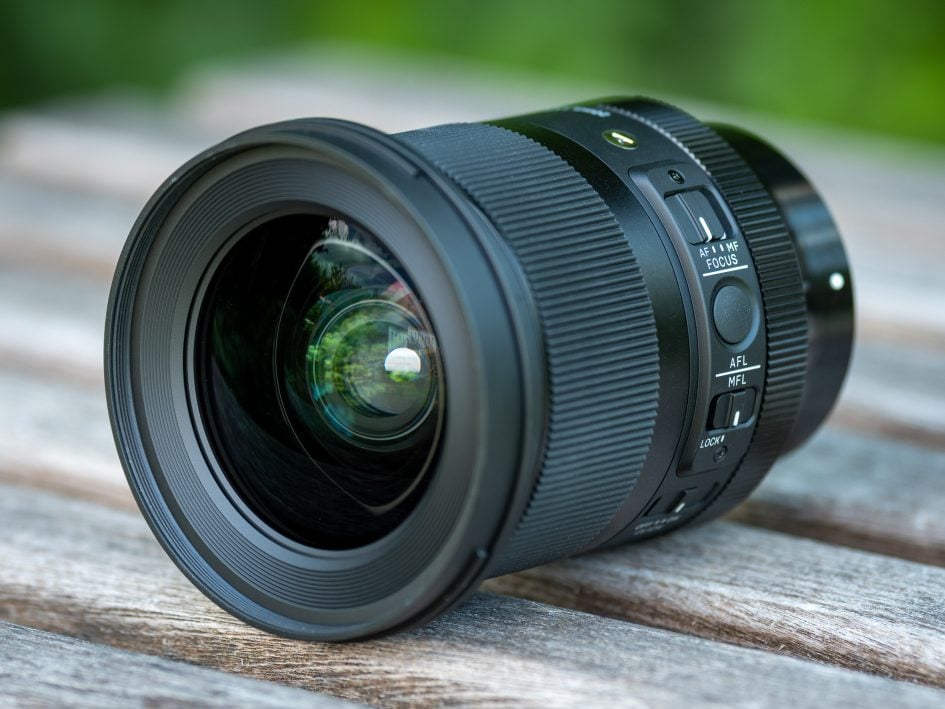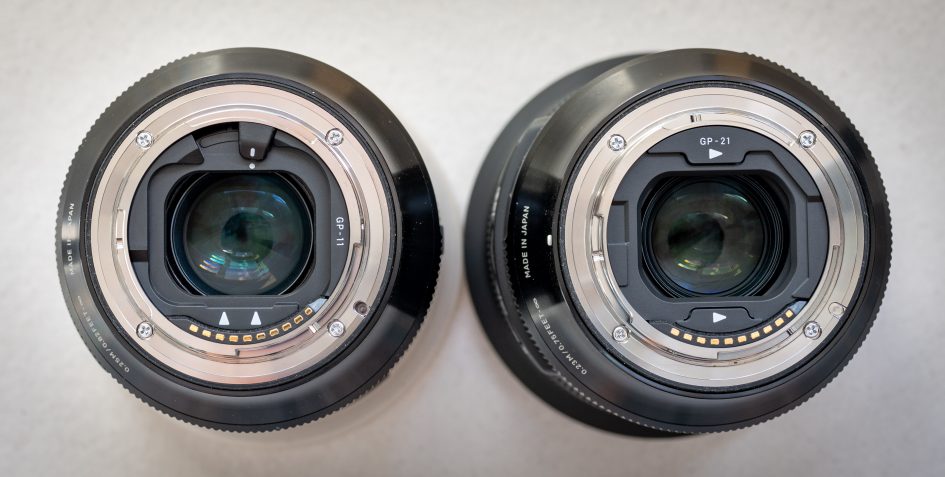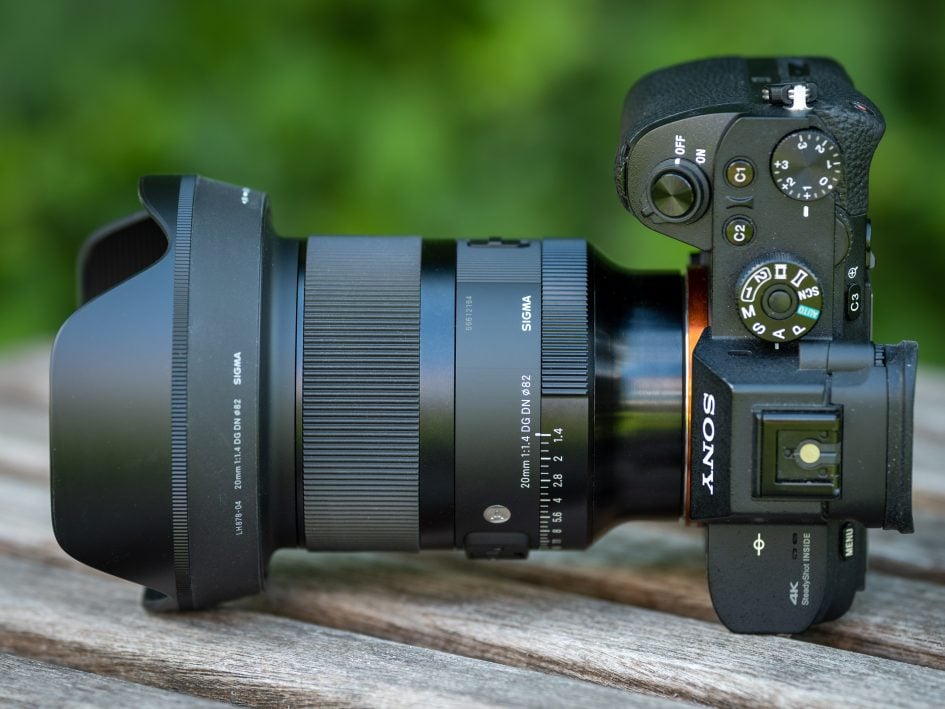Sigma 20mm f1.4 DG DN Art review
-
-
Written by Thomas
Intro
The 20mm f1.4 DG DN Art from Sigma is an ultra-wide prime lens designed for mirrorless cameras with L-mount or Sony E-mount and corrected for full-frame sensors. It delivers a field-of-view that captures comfortably more than a 24mm lens, making it ideal for expansive landscapes, tight interiors, wide astro photography, as well as vlogging or environmental portraiture. The 20mm f1.4 DG DN Art combines this coverage with a bright focal ratio that’s ideal for low-light use and can also deliver shallow depth-of-field effects, especially when the subject is positioned close to the minimum focusing distance of 20cm. Use it on an APS-C body and its coverage is equivalent to a 30mm lens. The Sigma 20mm f1.4 DG DN Art costs 999 EUR / 899 USD / 859 GBP and is made in Japan. It was announced in August 2022 together with Sigma’s 24mm f1.4 DG DN Art complementing the Sigma 20mm f2 DG DN and Sigma 24mm f2 DG DN of their Contemporary line. And Sigma still sells the 20mm f1.4 DG HSM Art and 24mm f1.4 DG HSM Art designed for DSLRs which can be used via adapter on a Sony E-mount camera.
For this review I tested the Sigma 20mm f1.4 DG DN Art on the 42MP Sony A7R II camera to judge optical performance against the Sony FE 20mm f1.8 G and Sigma 24mm f1.4 DG DN Art. So if you’re interested in which (ultra-)wide prime lens is right for your mirrorless Sony or L-mount camera, you’ve come to the right place!
Facts and features
As usual I’ll have a look at the technical data of the new Sigma 20mm f1.4 DG DN Art first. I’ve rated the features with a [+] (or [++]), when it’s better than average or even state of the art, a [0] if it’s standard or just average, and [-] if there’s a disadvantage. For this comparison I use the Sony FE 20mm f1.8 G (“Sony” for short) and Sigma 24mm f1.4 DG DN Art.
Size (diameter x length): 88 x 113mm (3.5 x 4.4in.). The lens hood adds 37mm and is 106mm in diameter. This is clearly longer and bulkier than the Sony at 74 x 85mm + 22mm lens hood but you have to take the difference in focal ratio (f1.4 vs. f1.8) into account. The Sigma 24mm f1.4 DG DN Art is 78 x 97mm + 36mm lens hood. [0]
Weight: 628g (22.2 oz.) plus 57g for the lens hood. The Sony is much lighter at 373g + 17g lens hood, the Sigma 24mm f1.4 DG DN Art is 509g + 48g lens hood. [0]
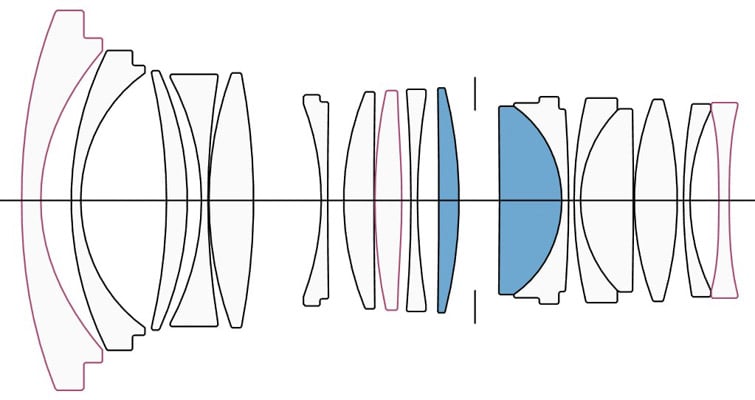
Optics: 17 elements (including 2 special dispersion and 3 aspherical) in 15 groups. The Sony is a 14/12 design, the Sigma 24mm f1.4 DG DN Art is 17/14. All three lenses employ fluorine coating on the front to repel water, dust, and dirt and should make for easier cleaning. [+]
Closest focus distance in manual focus is 0.20m (0.66ft.) with a working distance of only 7cm and a magnification of 1:5.0. A magnification of 1:10 is achieved at 0.30m giving a working distance of 0.13m with the lens hood attached. The maximum magnification of the Sony is 1:3.8, the Sigma 24mm f1.4 DG DN Art achieves 1:5.7. [0]
Image stabilization: The lenses in this comparison don’t have optical stabilization. You only get the built-in sensor-shift stabilization which most modern mirrorless camera bodies provide. [0]
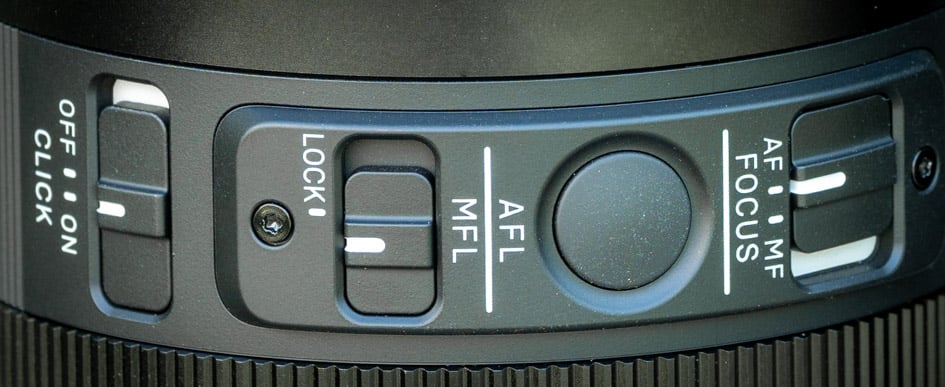
Auto focus: Yes, all three lenses in this comparison have autofocus. Manual-focus override is by simply turning the focus ring which offers no distance or dof scale. The focus ring has the usual variable gearing on the Sigmas while the Sony has linear gearing and all three lenses have an AF-lock button and AF/MF switch. In addition both Sigmas have an MF-lock switch which disables the focus ring. This avoids accidentally moving focus position when handling the lens and is a boon especially once you have established an exact infinity focus for shooting the night-sky. As this is the first time I’ve seen it on a lens extra kudos to Sigma. [++]
Covers full frame/FX or smaller. Same with the alternatives. [+]
Filter-thread: 82mm on the Sigma 20mm f1.4 DG DN Art, the Sony has 67mm, the Sigma 24mm f1.4 DG DN Art 72mm. Both Sigma lenses also have a rear filter holder which is a nice addition as it helps avoid stacking multiple filters at the front which might lead to vignetting. But you need different filters for them: The 20mm Sigma only takes sheet filters cut from plastic film while the 24mm Sigma also takes sturdier rear lens glas filters like those from Haida and has a lever to hold them in place. Sigma supplies both lenses with a template to cut out sheet filters. [+]
Above: Rear filter holder of Sigma 24mm f1.4 DG DN Art, Sigma 20mm f1.4 DG DN Art
Price: The Sigma 20mm f1.4 DG DN Art is priced at 999 EUR (incl. 19% VAT) / 899 USD / 859 GBP. The Sony currently goes for about 920 EUR / 898 USD / 775 GBP, the Sigma 24mm f1.4 DG DN Art is at 899 EUR / 799 USD / 779 GBP. [0]
Sigma’s service can change the mount of the lens between Sony’s E-mount and L-mount (at a cost). This is a unique feature that no other manufacturer offers. [++]
Accessories: Comes with a well padded pouch with strap and the lens hood is included, reversible for transport. The Sigma 24mm f1.4 DG DN Art comes with a padded pouch which has a loop to carry it on the belt, no strap. The lens hood on both Sigmas has a locking mechanism to prevent it from accidentally falling off. The Sony has a simpler soft pouch and its lens hood has no lock.[+]
Aperture ring: Yes, all three lenses in this comparison have a dedicated aperture ring with 1/3 stops from wide open to f16 (f22 on the Sony) and a position “A” for aperture control from the camera. The ring can be de-clicked for noise-free operation and both Sigmas also have a lock to prevent accidentally going from manual aperture control to “A” – or vice versa. [+]
Sealing: Yes, all three lenses have a rubber grommet at the lens-mount plus further special weather-sealing throughout the construction. [+]
The score of 0[-]/5[0]/10[+] shows that the lens has a very good feature set. Aside from its bright f1.4 focal ratio and thorough weather sealing the lens offers some unique features: It has a switch to disable the focus ring, it can take filters at the front and rear and finally you can get the mount changed between E-mount and L-mount. And Sigma implemented a fully featured aperture ring: It’s de-clickable and you can prevent the ring going accidentally from manual to automatic aperture operation or vice versa. The lens may be larger or heavier than Sony’s FE 20mm f1.8 G but then the Sony collects 2/3 of a stop less light.
Focus
Focus accuracy and repeatability is critical to consistently produce sharp shots especially with large aperture lenses. Repeatability (the accuracy of focus on the same subject after repeated focus-acquisition) of this lens was measured 97.8% in Reikan FoCal. There was no outlier over a series of 40 shots on the well lit and contrasty focus test target but I found that results depended a bit on whether the lens was coming from infinity or from closer.
Regarding focus speed: The Sigma focuses in around 0.5 sec from infinity to 0.3m (1:10 magnification) – which is pretty fast but comparable to the Sony and 24mm Sigma. There was no hunting under the well-lit test conditions. The focus ring is 27mm wide and well damped – but still can be turned with one finger. Its surface is rubberized and has a good grip.
AF-operation of the Sigma is barely audible from the outside or if you record video with the built-in microphone. Operating the aperture ring in its de-clicked state only registers as a very low tick as the aperture blades move. As you pull focus, you’ll notice pretty little focus breathing: the image became only 2% less magnified when I adjusted focus from infinity to 0.3m. This is barely visible when shooting videos.
Next check out my quality results!
Check prices on the Sigma 20mm f1.4 DG DN Art at B&H, Adorama, WEX UK or Calumet.de. Alternatively get yourself a copy of my In Camera book, an official Cameralabs T-shirt or mug, or treat me to a coffee! Thanks!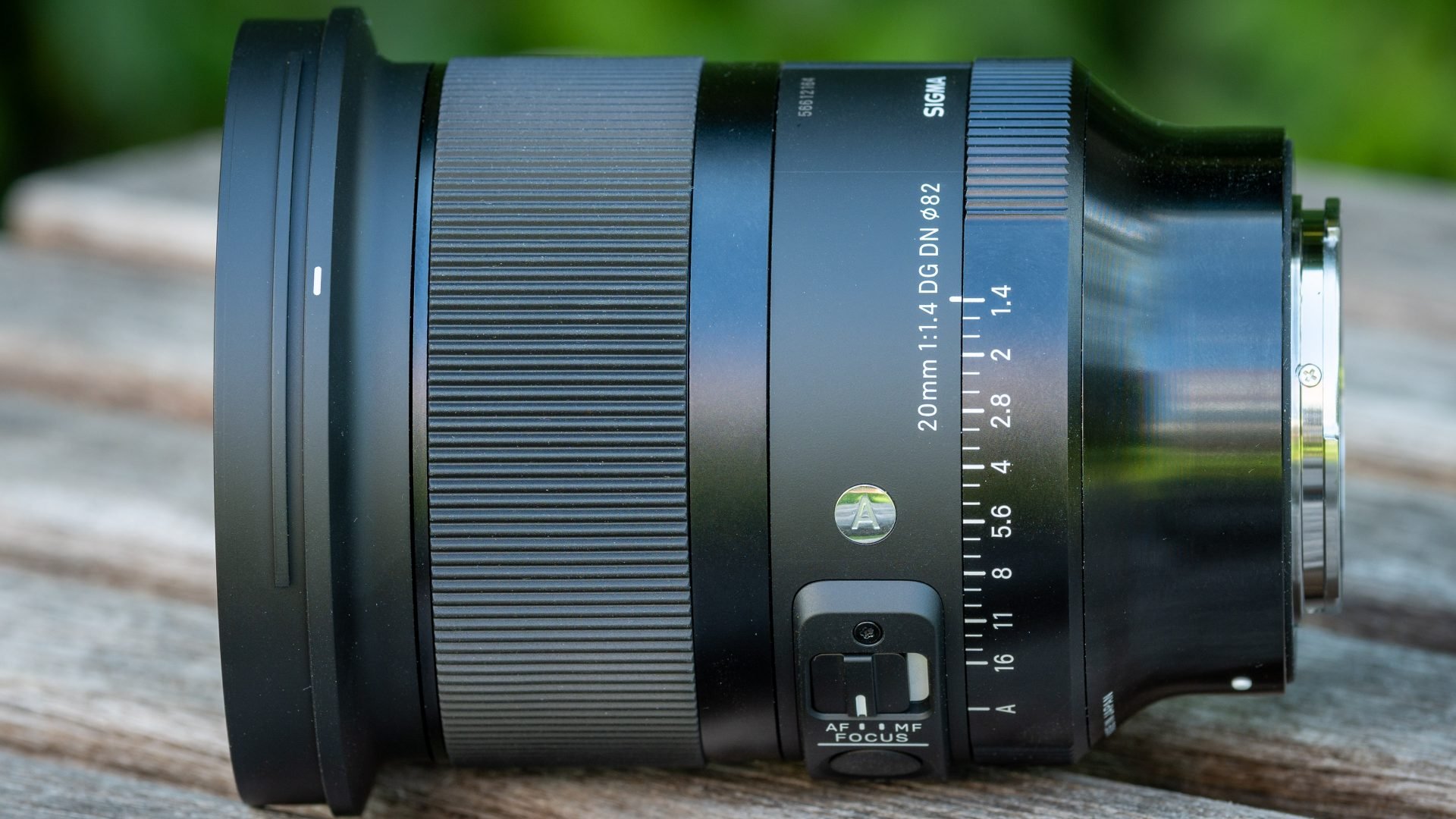
 Sigma’s 20mm f1.4 DG DN Art is a well performing and well featured ultra-wide prime lens ideal for expansive landscapes, tight interiors, vlogging or environmental portraiture. And its bright f1.4 focal ratio, well controlled coma, and flat field at infinity makes it especially suited for astro photography. The lens is thoroughly weather sealed, has an AF-lock button plus a switch to disable the focus ring, a de-clickable aperture ring, and it can take filters at the front and rear. The lens offers quite a nice Bokeh for an ultra-wide and lets you shoot confidently in adverse contra-light situations. And although it is not quite as sharp as the Sony FE 20mm f1.8 G the combined package of features and performance makes Sigma’s 20mm f1.4 DG DN Art still Highly Recommended.
Sigma’s 20mm f1.4 DG DN Art is a well performing and well featured ultra-wide prime lens ideal for expansive landscapes, tight interiors, vlogging or environmental portraiture. And its bright f1.4 focal ratio, well controlled coma, and flat field at infinity makes it especially suited for astro photography. The lens is thoroughly weather sealed, has an AF-lock button plus a switch to disable the focus ring, a de-clickable aperture ring, and it can take filters at the front and rear. The lens offers quite a nice Bokeh for an ultra-wide and lets you shoot confidently in adverse contra-light situations. And although it is not quite as sharp as the Sony FE 20mm f1.8 G the combined package of features and performance makes Sigma’s 20mm f1.4 DG DN Art still Highly Recommended.